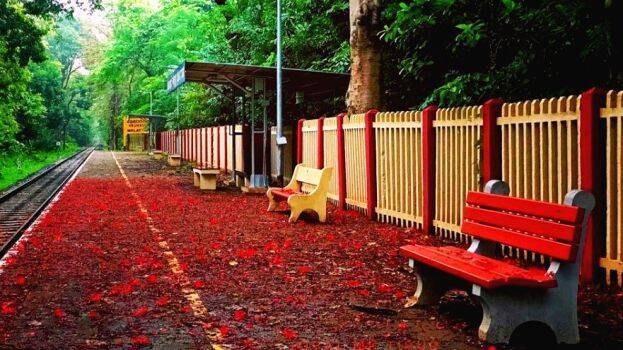

MALAPPURAM: Malayalis who have seen the superhit movie 'Krishnagudiyil Oru Pranayakalam' will never forget the snowy Krishnagudi and railway track surrounded by greenery. Although Krishnagudi is a fictional village, the railway track shown in the film is on the Nilambur - Shoranur route. Here, one can experience the breathtaking views as a train passes past teak forests, rivers, paddy fields, and mountains. However, this lovely sight will not last long.
In order to electrify the rail track, 5000 trees will be cut down in the area. Installation of electricity poles has begun. This requires 1,300 poles. The Rs 90 crore project is scheduled for completion in March 2024. At the Melattur station, every tree was cut down to build the traction substation.
The beauty of the Melattur station reddened with Gulmohar flowers had once gone viral after the Union Railway Minister posted it on social media. Various organizations have given petitions to the Railways requesting to maintain the beauty of the path. Major portions of other popular Malayalam films like 'Number 20 Madras Mail' and 'Nadhiya Kollappetta Rathri' were also shot on this route.
Can save fuel and time
Diesel trains are running through the 66 km route. Fuel costs will drop by forty percent with the introduction of electric trains. Additionally, the 1.35-hour journey duration will be cut to one hour or 1.10 hours. There is also a plan to run MEMU on the route. Electrification will also help the proposed Nilambur-Nanjangud route. Currently, seven trains are running on the route, including the Rajya Rani Express. A revenue of Rs 15.19 crores was generated last year from 22.4 lakh passengers.
Rail line built in 1927
The rail line was built in 1927. It was destroyed in the Malabar riots. While some are claiming that the rail line was built to transport soldiers in such situations, others are arguing that the rail line was built to transport Nilambur teak. During World War II, the track was dismantled and taken away when there was a shortage of iron. After this, trains started running on this route in 1954.